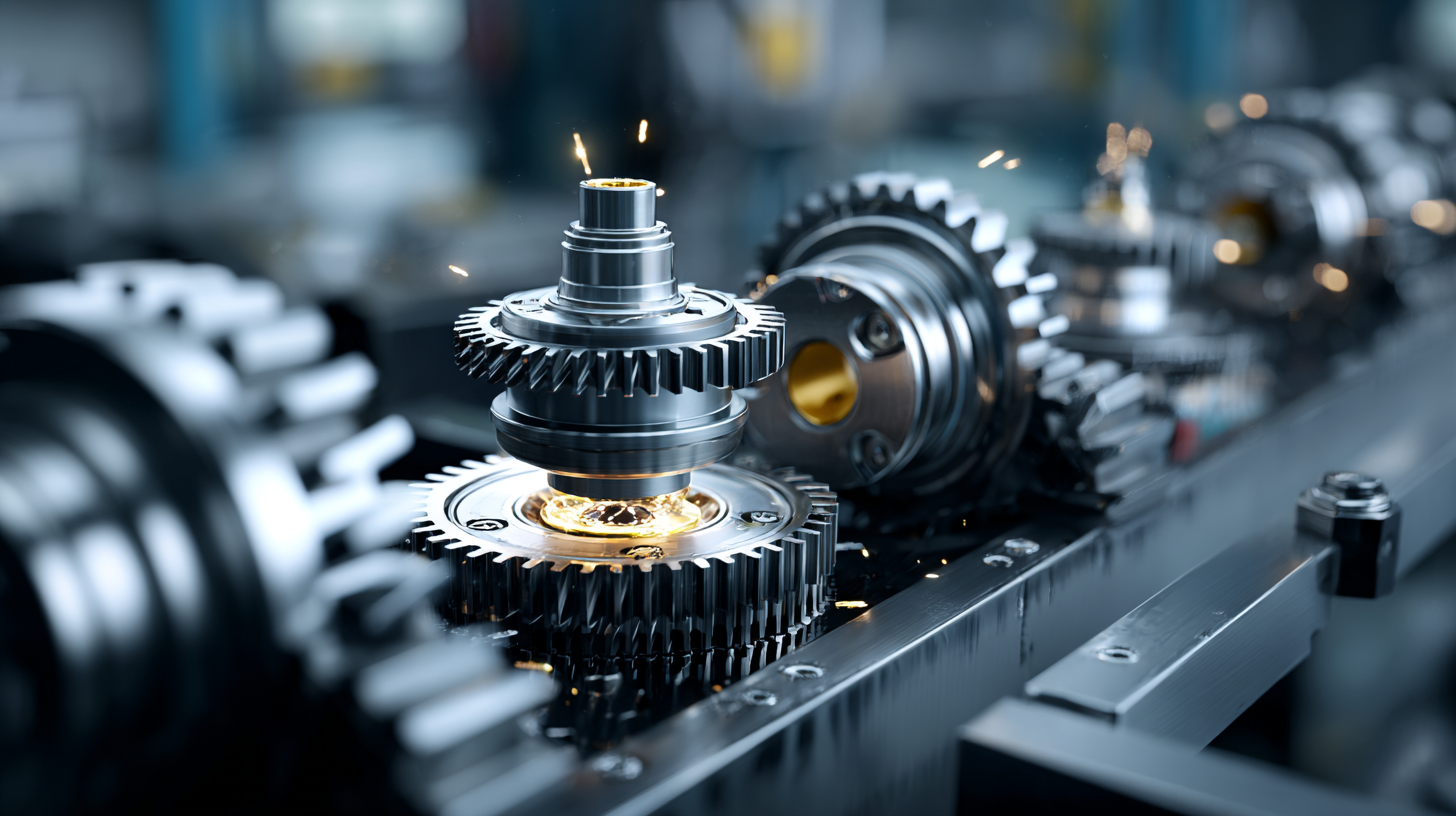Top Trends in Best Machine Engineering: What to Expect in 2025
As we look towards 2025, the landscape of machine engineering is poised for significant transformation driven by technological advancements and innovative practices. The integration of artificial intelligence, automation, and smart manufacturing systems is set to redefine the industry norms, creating opportunities for enhanced efficiency and precision in engineering processes. In this blog, we will delve into the top trends shaping the future of machine engineering, explore how these developments will influence design, production, and maintenance, and provide actionable insights on how professionals can adapt to these changes. By understanding these emerging trends, machine engineering experts can position themselves at the forefront of the industry, ensuring they are prepared to meet the evolving demands of a technologically advanced landscape.

Emerging Technologies Shaping Machine Engineering in 2025
As we approach 2025, the landscape of machine engineering is undergoing significant transformation driven by emerging technologies. According to a report by the Government Office for Science, advancements in artificial intelligence and engineering biology are poised to be major drivers of economic growth, potentially contributing to half of the UK's growth in the next decade. This shift highlights the importance of integrating AI and machine learning into engineering practices to enhance efficiency and innovation.

In line with these trends, educational institutions are adapting their curricula to prepare future engineers for the evolving job market. For instance, the Telangana Council of Higher Education has revised the B.Tech syllabus to incorporate critical knowledge in AI and machine learning within core engineering programs. This adjustment emphasizes the demand for tech-savvy professionals who can leverage these technologies to solve complex engineering challenges. As industries increasingly seek expertise in data science and cloud computing, the necessity for skilled engineers proficient in these emerging technologies will only continue to grow.
Innovative Materials Revolutionizing Machine Design and Functionality
Innovative materials are set to transform the landscape of machine engineering by 2025, driving significant advancements in design and functionality. According to a recent report by Markets and Markets, the global advanced materials market is expected to reach $120 billion by 2025, highlighting the industry's pivot towards lightweight and high-performance alternatives. Materials such as carbon fiber reinforced polymers (CFRP) and advanced composites are gaining traction due to their strength-to-weight ratios, enabling manufacturers to create more efficient and versatile machinery.

In addition to enhancing performance, these innovative materials also contribute to sustainability goals. A study from the American Society of Mechanical Engineers (ASME) notes that the use of biodegradable materials in machine design can reduce environmental impact by up to 30%. As the automotive and aerospace sectors increasingly prioritize eco-friendly practices, engineers are now exploring bio-based composites and recycled materials, which not only improve machine performance but also align with global sustainability targets. This shift is poised to redefine engineering standards and foster a new era of resource-efficient machines, meeting both industrial demands and ecological responsibilities.
Automation and AI: Transforming Production Processes in the Industry
The future of machine engineering is undeniably intertwined with the rapid advancements in automation and artificial intelligence (AI). By 2025, industries can expect a significant transformation in production processes, driven by these cutting-edge technologies. Automation has already begun to optimize workflows, reduce human error, and enhance operational efficiency. As machinery becomes increasingly autonomous, companies will find themselves able to scale their production more effectively, responding to market demands with unprecedented speed and precision.
AI plays a crucial role in this transformation, providing powerful tools for data analysis and decision-making. In a manufacturing setting, AI can optimize processes by predicting maintenance needs, improving supply chain logistics, and enabling smart quality control systems. As machine learning algorithms become more sophisticated, they will offer insights that were previously unattainable. This not only minimizes downtime and resource wastage but also fosters an environment of continuous improvement, allowing organizations to innovate and adapt swiftly to changes in the market landscape. By harnessing the power of automation and AI, the machine engineering sector is poised to redefine efficiency and productivity, paving the way for a new era of industrial excellence.
Top Trends in Best Machine Engineering: What to Expect in 2025
This bar chart illustrates the projected percentage adoption of Automation and AI technologies in the machine engineering sector by 2025, highlighting the key trends influencing production processes.
Sustainability Trends Driving Machine Engineering Practices
As we look toward 2025, sustainability is set to become a cornerstone of machine engineering practices. With the increasing urgency of climate concerns, engineers are re-evaluating their methodologies to prioritize eco-friendliness and resource efficiency. Innovations such as biodegradable materials, energy-efficient machinery, and waste-minimization techniques will likely take center stage, driving the discipline toward more sustainable practices that align with global environmental goals.
The shift toward sustainability not only transforms traditional manufacturing processes but also influences the design phase. Engineers are now expected to consider the entire lifecycle of their creations, from sourcing raw materials to end-of-life disposal. Integrating renewable energy sources into machine design and employing advanced simulation tools to minimize environmental impact are strategies that will gain traction in the coming years. This trend underscores a growing commitment to not just meeting regulatory requirements but also exceeding them to foster a sustainable future in the machine engineering sector.
Top Trends in Best Machine Engineering: What to Expect in 2025 - Sustainability Trends Driving Machine Engineering Practices
| Trend | Description | Impact on Machine Engineering | Projected Adoption Rate by 2025 |
|---|---|---|---|
| Circular Economy | Focus on reusing materials and reducing waste in machine production. | Enhances sustainability and reduces costs associated with raw material sourcing. | 70% |
| Smart Manufacturing | Integration of IoT and AI for real-time monitoring and optimization. | Increases efficiency and reduces energy consumption in manufacturing processes. | 65% |
| Sustainable Materials | Use of biodegradable and recyclable materials in machine components. | Reduces environmental impact and improves product lifecycle management. | 80% |
| Energy Efficiency Standards | Adoption of strict energy consumption regulations for machinery. | Pushes manufacturers to innovate and improve energy usage in machinery. | 75% |
| Remote Diagnostics and Maintenance | Utilization of remote monitoring tools for predictive maintenance. | Minimizes downtime and extends the lifespan of machinery. | 60% |
The Role of IoT in Enhancing Machine Performance and Monitoring
The integration of the Internet of Things (IoT) into machine engineering is set to transform how industries approach performance enhancement and monitoring. By 2025, it is projected that IoT technology will enable a revenue growth of approximately $520 billion for the manufacturing sector alone, according to a recent report by McKinsey. This growth will be driven by enhanced connectivity and data analysis capabilities, allowing machines to communicate in real-time and adjust their operations based on live feedback. The real-time monitoring of machinery not only optimizes performance but also extends the lifespan of equipment through predictive maintenance.
To fully leverage the benefits of IoT, consider implementing a robust data analytics platform. This will allow your team to analyze trends and patterns in machine behavior, leading to informed decision-making. Additionally, investing in sensor technology is crucial; it can provide critical insights into operational inefficiencies and potential failures before they escalate.
Another key aspect is training personnel on IoT tools and data interpretation. By fostering a culture of continuous learning, organizations can empower employees to utilize data-driven insights effectively, which is essential for maintaining a competitive edge in the rapidly evolving landscape of machine engineering.
